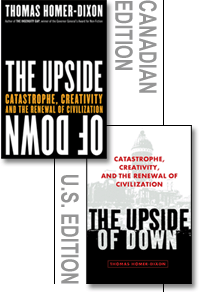The project of European Union, and its single currency experiment, were politically an attempt to unite fractious nations in order to put an end to a history of horribly destructive conflict. Economically, the goals were to scale up governance in Europe, to transition from the national to the transnational level in order to wield more power as a larger trading block. As such it was very much in line with the global trend of the last thirty years towards scaling up almost everything. However, as we have observed before, such expansions are inherently fragile and self-limiting:
This in-built need to expand, sometimes to the scale of an imperium in the search for new territory, means that the process is grounded in ponzi dynamics. Expansion stops when no new territories can be subsumed, and contraction will follow as the society consumes its internal natural capital….
….A foundational ingredient in determining effective organizational scale is trust – the glue holding societies together. At small scale, trust is personal, and group acceptance is limited to those who are known well enough to be trusted. For societies to scale up, trust must transcend the personal and be grounded instead in an institutional framework governing interactions between individuals, between the people and different polities, between different layers of governance (municipal, provincial, regional, national), and between states on the international stage.
This institutional framework takes time to scale up and relies on public trust for its political legitimacy. That trust depends on the general perception that the function of the governing institutions serves the public good, and that the rules are sufficiently transparent and predictably applied to all. This is the definition of the rule of law. Of course the ideal does not exist, but better and worse approximations do at each scale in question.
Over time, the trust horizon has waxed and waned in tandem with large cycles of socioeconomic advance and retreat. Trust builds during expansionary times, conferring political legitimacy on larger scale forms of organization. Trust takes a long time to build, however, and much less time to destroy. The retreat of the trust horizon in contractionary times can be very rapid, and as trust is withdrawn from governing institutions, so is political legitimacy. Continue reading “The Death of Democracy in a Byzantine Labyrinth”

